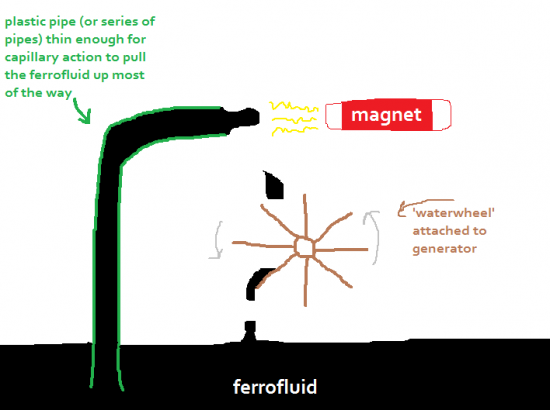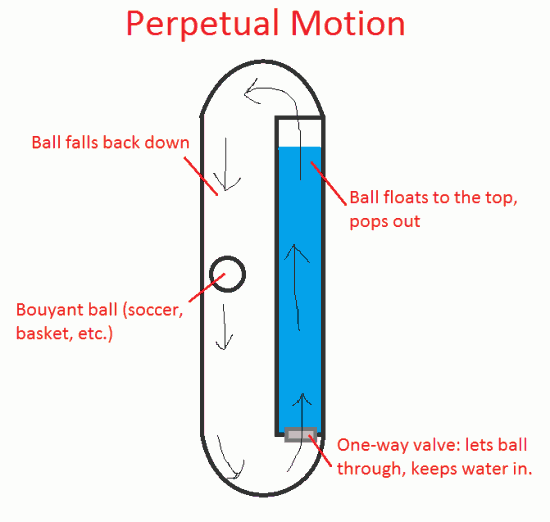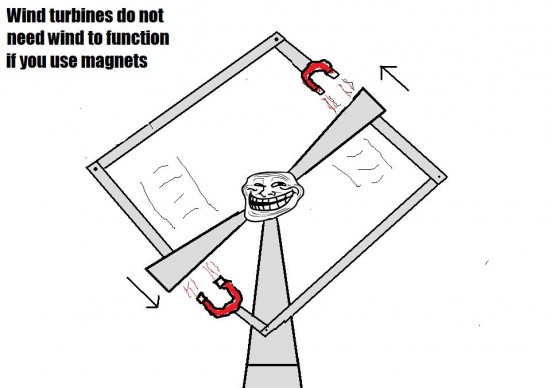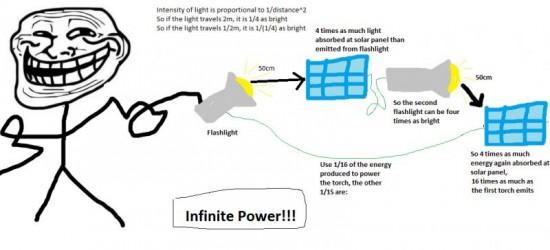No 6. Free Energy Ferrofluid
Although this method comes closest to being the real deal and finding a fault with it is pretty hard, it is impossible nevertheless. It will fail because Capillary Action will not work in the same way with this type of fluid, leading to problems with the ferrofluid moving up the tube. Additionally you would likely have problems with ferrofluid sticking to the magnet instead of falling as depicted in the image.
No 5. Free Floating Energy
In order for the ball to make it through the valve while keeping the water in, it would be required to overcome friction, removing energy from the system. Additionally, the ball would not just “pop out” of the top and fall back down; additional energy would be required for this to work, leaving the system far from being perpetual motion machine.
No 4. Free Energy Windmill
This is another case of failing to account for the equal and opposite forces as stated in Newton’s laws of motion. The magnets exert an equal and opposite force on the blades as the blades do on the magnets, resulting in a windmill that does not move.
No 3. Free Energy Flashlight Method 2
You would not be able to get more light to hit the solar panel than was emitted from the bulb or even the total amount of light emitted for that matter. Furthermore, the number of photons doesn’t magically increase, they’re just packed more densely at shorter distances.






